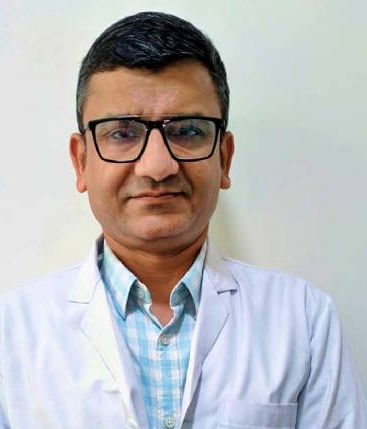Microneedling Treatment: Scar and Wrinkle Fix
Dr. Priyanka Sharma

Treatment Duration
25 Minutes
------ To ------30 Minutes
Treatment Cost
₹ 2,000
------ To ------₹ 35,000

Table of Contents
- What is Microneedling?
- Conditions treated by Microneedling
- Who needs Microneedling?
- How is Microneedling performed?
- What to expect before and on the day of Microneedling?
- What to expect after Microneedling?
- Benefits of Microneedling
- Risks and complications of Microneedling
- Risk of delayed Microneedling
- Cost of Microneedling
Microneedling is a recently developed aesthetic treatment that has gained wide popularity among skin-care enthusiasts. It has revolutionised the field of aesthetic medicine due to its cutting-edge technology. This article will highlight the science behind microneedling, its procedure, the before and after results of microneedling, and its benefits!
| Surgery Name | Microneedling |
| Alternative Name | Collagen Reduction Therapy, Dermarolling |
| Diseases Treated | Acne scars, Hair loss, Wrinkles, Stretch marks |
| Benefits of the Surgery | Reduce the appearance of scars, Effective, Safer, Less expensive |
| Treated by | Dermatologist |
You can check Microneedling Cost here.
What is Microneedling?
Anatomy and Physiology of the Skin
The skin is the body's largest and primary protective organ of the human body. It is made up of three layers of tissues. The upper layer is the epidermis, the layer below the epidermis is the dermis, and the third layer is the subcutaneous tissue.- The epidermis provides a waterproof barrier and contributes to the tone of the skin.
- The dermis contains connective tissue, hair follicles, blood vessels, lymphatic vessels, and sweat glands.
- The subcutaneous tissue (hypodermis) is made of fat and connective tissue.
- Protection against microorganisms, dehydration, ultraviolet light, and mechanical damage.
- Sensation of pain, temperature, touch, and deep pressure starts with the skin.
- Mobility: The skin allows smooth movement of the body.
- Endocrine activity: The skin initiates the biochemical processes involved in Vitamin D production, which is essential for calcium absorption and normal bone metabolism.
- Exocrine activity: The skin secretes products that can harm the body such as urea and ammonia.
- Immunity development against pathogens.
- Regulation of Temperature: Skin participates in thermal regulation by conserving or releasing heat and helps maintain the body’s water and homeostatic balance.
Expert Doctors (10)
NABH Accredited Hospitals (10)


Conditions treated by Microneedling
- Reduces the appearance of scars, especially acne scars
- Decreases fine lines and wrinkles
- Reduces large pores
- Improves skin’s elasticity
- Decreases hyperpigmentation (dark spots)
- Reduces stretch marks
- Smoothes uneven skin tone
- Increases hair growth
Who needs Microneedling?
- Microneedling for Acne Scars
- Acne is a common skin condition affecting 80% of people aged 11-30. People have been worried about acne for a long time. But this innovative treatment has been a game-changer ever since its inception.
- Studies have shown that microneedling for acne scars has been proven to be very effective. Microneedling facial treatment can reduce acne scars by forming new tissue, thus rejuvenating the skin with a spotless glow.
- Here are the microneedling before and after results. Notice the spotless and radiant skin after the treatment in each person.
- Microneedling for acne scars can turn out to be one of the best treatment options. However, it should be combined with other acne scar treatments to maximise results. Other acne scar treatments include chemical peels, subcision, microdermabrasion, fractional resurfacing, etc.
- Microneedling for Hair
- Studies suggest that microneedling hair can help induce stem cells in the hair follicles, thus leading to hair growth.
- It is also thought to promote the absorption of several hair loss medications, such as minoxidil and topical steroids, indirectly stimulating hair growth.
- Microneedling hair might be a good treatment option, particularly for male pattern baldness, also known as androgenic alopecia.
- Microneedling hair helps by promoting hair growth or by thickening hair.
- Microneedling for wrinkles and stretch marks
- Microneedling facial treatment, due to its healing quality, works fantastic for reducing fine lines and wrinkles on the face. It results in tightening the skin, thus preventing ageing. Microneedling also diminishes the appearance of stretch marks as it boosts collagen and elastin production.
How is Microneedling performed?
- Microneedling works by puncturing the skin with microscopic wounds using thin needles. Creating these tiny wounds triggers the skin’s repair mechanisms and stimulates collagen production.
- The main idea behind microneedling is to stimulate collagen production. Hence it is often referred to as collagen induction therapy or percutaneous collagen induction. Collagen is a protein in the connective tissue present throughout the body. It holds the cells and tissues together and is produced in the tissue while healing.
- Due to the tiny abrasions caused by microneedling, growth factors are released. Growth factors are proteins that help grow new tissues in the body. These growth factors encourage the skin to produce new collagen and elastin. After the procedure, new capillaries are also formed, which along with collagen production, collectively reduces scarring.
- According to the American Academy of Dermatology Association (AAD), microneedling can help reduce the visibility of scars and dark patches while enhancing skin elasticity.
- It's a simple, safe and effective procedure to treat various skin conditions.
- Step one: Preparing the patient
The patient is made to lie down in a supine position. The area to be treated is exposed and well-lit. - Step two: Preparation of the area
The area will be prepared by applying antiseptic and saline. Then the doctor will numb the patient’s skin before starting the procedure with the help of a local anaesthetic agent. Commonly used anaesthetic agents include a mixture of lignocaine and tetracaine. This is done to decrease the pain and discomfort. This step lasts for around 45 minutes to an hour. - Rolling
After numbing the area, the doctor will stretch the skin and perpendicularly use the derma roller for 15-20 minutes over five times each in horizontal, vertical, and oblique directions. While rolling, pin-point bleeding, also known as petechiae, occurs, which will be controlled by the doctor. - Post-rolling
After rolling, the area is wetted with saline pads or ice packs to comfort the patient. The doctor may apply a cream or serum to soothe the skin and minimise discomfort and side effects.
What to expect before and on the day of Microneedling?
Before Microneedling
- Before microneedling, the patient must inform the dermatologist about any current medications they’re on.
- The patient should avoid medications such as ibuprofen and Accutane (used for acne treatment) well before the procedure to prevent adverse reactions.
- The doctor may also suggest stopping using topical retinoids and exfoliants before the procedure.
On the day of Microneedling
- The patient will be asked to sign the consent form in the presence of his/her family.
- Vitals will be monitored.
- The patient will then be shifted to the operation theatre.
What to expect after Microneedling?
The recovery process in the hospital
- After the surgery is complete, the patient will be moved back to the hospital ward so that he/she can recover.
- The patient might also notice erythema, commonly known as redness, in the area that has been treated. This can last for up to 2 to 3 days.
Recovery process/expectation after hospital discharge
- The patient may resume their day-to-day activities from the very next day of microneedling facial treatment since this procedure has a very low downtime of 24 hours. However, the doctor will instruct to protect oneself from sunlight (photoprotection).
- The doctor will advise using sunscreen and following sun-protective measures daily.
- Local antibiotic creams can also be prescribed in some cases to prevent infections.
- Patients are advised to follow these skin care steps after each session to speed up healing:
- Stay hydrated
- Use antioxidant serum on the skin
- Use a cooling mask
- Use collagen-stimulating peptides
- Avoid products with retinol and alpha hydroxy acids
- Avoid applying makeup
- Avoid getting sweaty
First follow-up appointment
- A minimum of 6 weeks gap is recommended between two sittings since that is how long it takes for new natural collagen to form.
Benefits of Microneedling
- Reduce the appearance of scars:
Microneedling for acne scars is one of the best treatment options. It reduces scars by stimulating collagen production. Due to the healing property being one of several microneedling benefits, it is widely recommended as a microneedling facial treatment. - Reduce the appearance of fine lines and wrinkles:
Microneedling works as an anti-ageing treatment modality as it reduces the appearance of fine lines and wrinkles. - Diminishes the appearance of stretch marks:
It boosts the production of collagen and elastin, which helps reduce the appearance of stretch marks. - Effective:
Microneedling has actually been known to rejuvenate and plump the skin in very little downtime. - Safer:
It's a safe procedure causing minimal discomfort to the patient. - Less expensive:
Microneedling is cheaper than other alternatives for skin conditions, such as laser therapy.
Risks and complications of Microneedling
Common microneedling side effects include:
- Erythema or redness after treatment
- Oedema after treatment
- Scarring
- Infections
- Bruising
- Peeling
- Bruises
- Redness
- Pain
- Oozing of blood from wounds
- Swelling
- Scarring due to needles
Risk of delayed Microneedling
Cost of Microneedling
- Microneedling costs in India can range anywhere from INR 2000 to 5000. Considering that you'd need at least six sessions to notice results, the total microneedling cost in India would range between INR 12,000 to 30,000.
- Radiofrequency Microneedling (RF Microneedling) is an advanced microneedling procedure that costs from INR 10,000 to 25,000 per session. Many derma rollers are also available online that is comparatively light on the pocket, but their effectiveness and safety are not yet proven.
Frequently Asked Questions (FAQ)
What are the myths versus facts about microneedling?
- Myth: Microneedling is very painful.
Fact: Microneedling can be slightly painful, but this pain can be masked due to the application of local anaesthetics. - Myth: You can try microneedling facial treatment at home.
Fact: Although many derma rollers are available for at-home use, their safety and effectiveness are not yet proven. Besides, they don’t render the same results as the clinic. - Myth: Microneedling effects are permanent.
Fact: The results of microneedling last for a maximum of six months. So you’ll need to repeat the procedure almost every six months. - Myth: Microneedling leaves holes in my skin!
Fact: Microneedling creates puncture wounds in the skin only so that the skin can heal itself, giving it a fresh look. It doesn’t leave holes in the skin. - Myth: Microneedling provides instant results.
Fact: Results of microneedling take time to show. It takes around 5 to 6 sessions to see visible results between the microneedling before and after pictures.
What does microneedling actually do?
Can microneedling make skin worse?
How long do microneedling results last?
What is the cost of microneedling?
Who should not do microneedling?
- Have skin conditions like psoriasis or eczema
- Have open wounds
- Have active acne
- Have or had cancer and have recently had radiation therapy
- Suffer from blood disorders
- Have a history of skin scars (keloids)
- Have skin rashes or cold sores
Do you see results after one session of microneedling?
Is Micro needling painful?
How often should you get microneedling done?
Which is better: chemical peel or microneedling?
Do and don'ts after microneedling?
- Stay hydrated
- Use antioxidant serum on your skin
- Use a cooling mask
- Use collagen-stimulating peptides
- Avoid direct sun exposure
- Avoid products with retinol and alpha hydroxy acids
- Avoid applying makeup
- Avoid getting sweaty
Are microneedling results permanent?
Will microneedling tighten skin?
What should I avoid before microneedling?
- NSAIDs
- Accutane (used for acne treatment)
- Make-up
- Heat-based cosmetic procedures
Does microneedling make you age faster?
Are there any side effects of microneedling?
How long does it take collagen to rebuild after microneedling?
Can microneedling lift jowls?
What is the downtime for microneedling?
How many microneedling sessions does it take to see results?
Is microneedling better than Microdermabrasion?
When should I start microneedling?
Is microneedling good for your face?
Last Updated on: 13 October 2025
Reviewer

Dr. Priyanka Sharma
MBBS, DNB Plastic Surgery, Training in Hand and Microvascular Surgery, Training in Hair Transplant
15 Years Experience
Dr Priyanka Sharma is a highly regarded Plastic, Reconstructive, and Aesthetic Surgeon with over 15 years of experience.
She is currently associated as a Consultant with:<...View More
Author

She has extensive experience in content and regulatory writing with reputed organisations like Sun Pharmaceuticals and Innodata. Skilled in SEO and passionate about creating informative and engaging medical conten...View More
Other Treatments in Your City






















